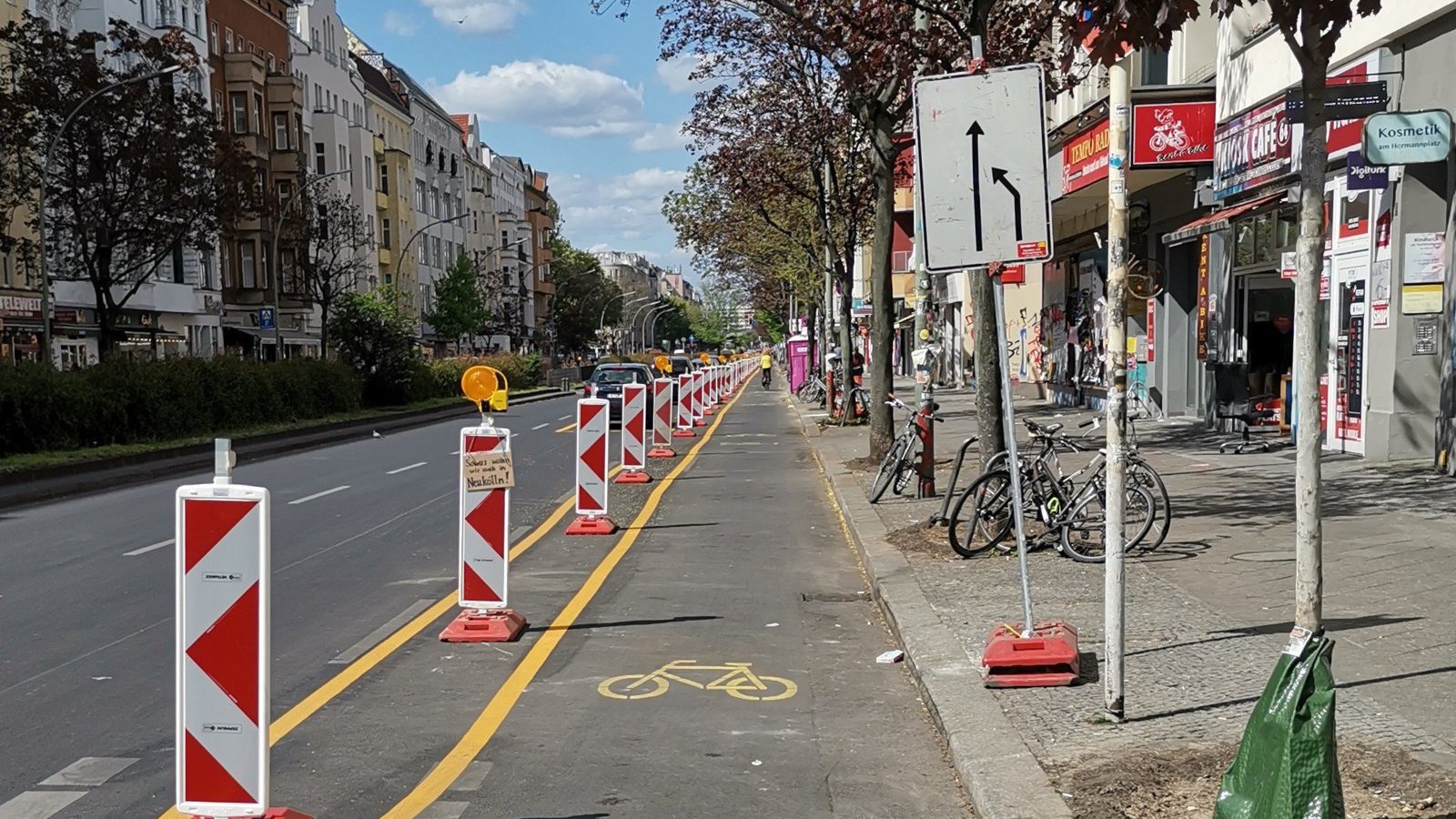
If you build it, they will come: New study shows impact of COVID-19 cycling infrastructure
A new study based on data from ECF’s COVID-19 cycling measures tracker shows that pop-up cycling infrastructure boosted cycling levels in European cities in the first months of the pandemic by between 11% and 48%.
Do public investments in sustainable mobility really bring about behaviour change? Can more dedicated infrastructure lead to increased levels of cycling? The results of a new study suggest this is the case: New bicycle lanes created during the COVID-19 pandemic increased cycle traffic in European cities by between 11% and 48%.
The aim of the study, which was conducted at the Mercator Research Institute on Global Commons and Climate Change (MCC), was to identify the actual cause-effect relationship between infrastructure and cycle traffic. “It’s clear that many people switched to cycling because of the coronavirus pandemic anyway to avoid crowds on public transport,” says Sebastian Kraus, policy analyst at MCC and lead author of the study. “But we show that the new cycle lanes have themselves also generated a considerable level of additional cycling traffic.”
The study collected data from 736 official bicycle counting stations in 106 European cities as well as infrastructure data from ECF’s COVID-19 cycling measures tracker to compare cities that put in place temporary “pop-up” cycling infrastructure in the beginning of the pandemic with those that did not.
Through regression analyses, the research team then calculated possible confounding factors, such as differences in the placement of counting stations, bus and train facilities, population density, propensity for “green lifestyles”, topography and weather. Taking into account statistical uncertainty, they concluded that pop-up bicycle lanes themselves generated between 11% and 48% additional cycle traffic from March to July 2020.
And not only did such measures boost cycle traffic, they were also very cost-effective; a kilometre of pop-up cycle track in Berlin, for example, cost only €9,500. “The opportunity to significantly influence the modal mix here with little effort is being unjustly neglected in many cities”, says Kraus.
The study, which was published in Proceedings of the National Academy of Sciences, a U.S. scientific journal, also illustrates the extent to which cycling infrastructure can have an impact not only on the climate but also on public health and related costs for the economy. If every kilometre cycled saves half a U.S. dollar in health care costs, a metric known from the public health literature, the overall health benefits for citizens of those of the 106 cities that created pop-up bike lanes would save them more than $1 billion a year in total if such cycling infrastructure became permanent.
To reap these benefits – environmental, economic and public health – public authorities at all levels must increase investments and add not only temporary but also permanent cycling infrastructure. Together with its partners in the cycling industry, ECF calls upon national governments to make cycling investments an integral part of their National Recovery and Resilience Plans.
Regions:
Contact the author
Recent news!
Upcoming events
Contact Us
Avenue des Arts, 7-8
Postal address: Rue de la Charité, 22
1210 Brussels, Belgium










